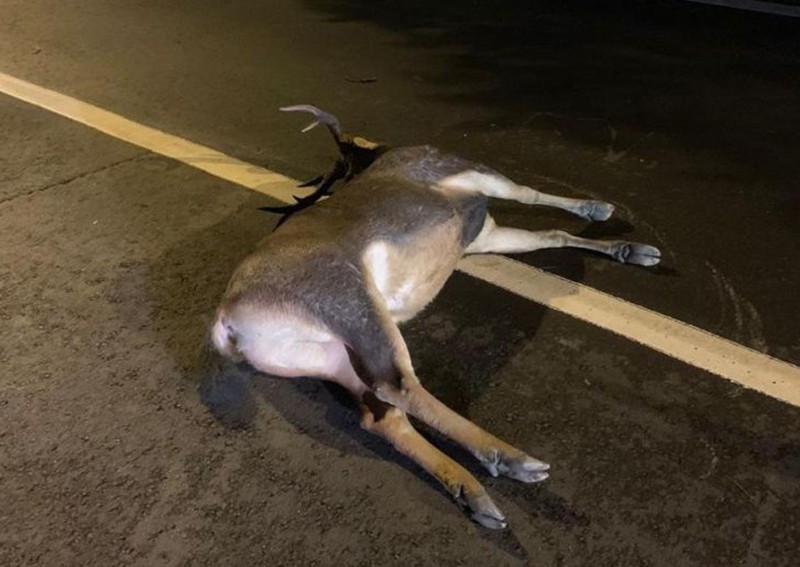Motorcyclist injured in Mandai Road accident involving wild sambar deer

SINGAPORE - A motorcyclist was injured in an accident along Mandai Road on Tuesday (Dec 18) evening which involved a wild sambar deer.
There had been at least two reports of incidents involving the wild deer this year.
A picture of the latest case shows a motorcycle lying on its side along the road, with a rider sitting next to it.
Another photo shows the dead deer lying on its side, with its eyes open and a pool of blood forming at its mouth.
Police said they were alerted to the accident at 8.10pm.
The Straits Times understands that the motorcyclist suffered multiple abrasions but refused to be taken to hospital.

Mr Kalai Vanan, deputy chief executive officer of the Animal Concerns Research & Education Society (Acres), said his group received a call about the incident at around 8pm.
As the deer was already dead, Acres did not attend to the case. It referred the caller to the National Environment Agency, which typically disposes of carcasses in such situations.
Mr Kalai said: "Mandai Road has forested areas on both sides. Sometimes, when the deer crosses the road, this can happen."
In February this year, a sambar deer died after it was hit by a vehicle in Mandai Road.
In June, another deer was put down after it wandered onto the Bukit Timah Expressway near Mandai Road and caused a three-vehicle accident.
In Singapore, sambar deer are typically found in areas around MacRitchie Nature Reserve and Upper Seletar Reservoir.
They are also found in other Asian countries such as India, Sri Lanka, Myanmar, southern China, Malaysia, Indonesia and the Philippines.
Also known as sambaur deer, it eats leaves, fruits and bugs. Males can grow up to 2m tall including antlers, and weigh up to 260kg, while females are two-thirds the size of males or smaller. They can live up to 20 years in the wild.
This article was first published in The Straits Times. Permission required for reproduction.